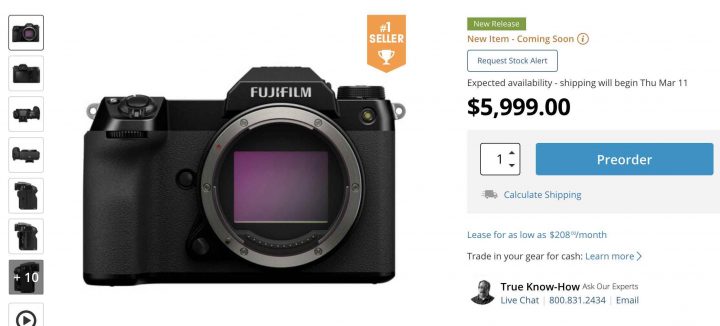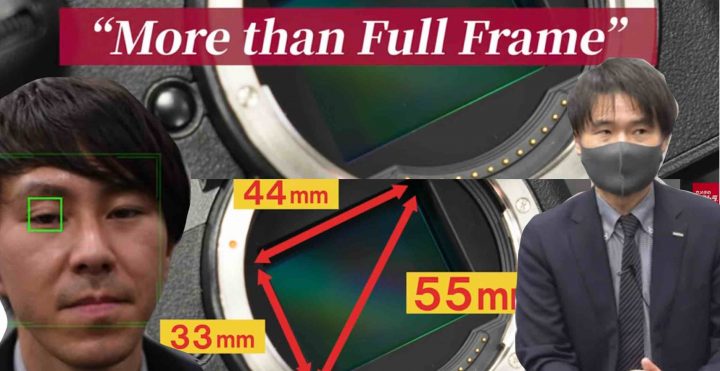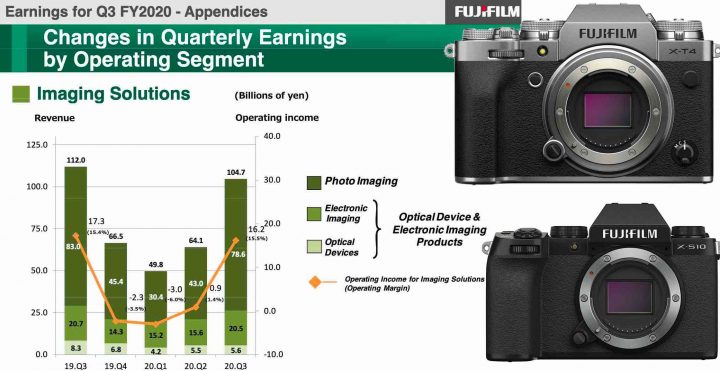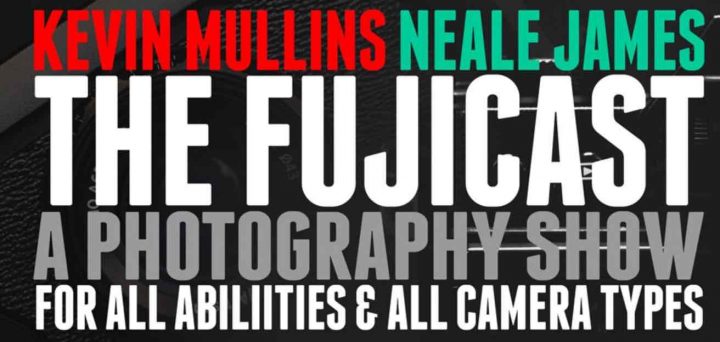Fujifilm GFX100S (vs GFX100) First Looks: Low Light AF Almost as Fast as Canon/Sony (Really?), Joystick Issues, Quick Eye AF Demo
ThePhoBlographer got his hands on a Fujifilm GFX100S since a few days, and here is initial feedback shared in two videos:
- super small
- 5 fps with continuous autofocus
- fantastic build quality and weather sealed
- autofocus is faster than original GFX100
- at minute 3:35 he says that in low light, the GFX100S is “pretty much almost as fast” as the Canon EOS R. It’s up there with Canon and Sony. He could not believe it, so he kept doing it over and over again, and it kept performing
- for being pre-production (hence not final firmware), it’s already very good autofocus on the GFX100S
Honestly, considering that this is just prototype firmware and that MF is not known to be master of speed, I have a hard time to believe that kind of autofocus performance.
What we know is that there is a new and improved algorithm in the Fujifilm GFX100S, that speeds up single, tracking and eye autofocus. So I definitely expect a sensible improvement over the original GFX100. But how much it was able to come close to high end full frame or APS-C cameras, that remains to see once more reviews come in with final production firmware.
Down below we also add a quick eye autofocus demo of the Fujifilm GFX100S. It’s a Japanese first look on the GFX100S, and I will let you start the video at 17:46 to get direct access to the quick eye AF demo.
Always covering the brand new GFX100S, ZP Productions shared an initial look at the GFX100S and compares it to the original GFX100. Here is what he says:
- coupled the smaller G mount lenses, you can hold and operate the camera one handed (such as with the GF45mm)
- has a top LCD like the GFX100, but GFX100 has also a small LCD on the battery grip
- he runs over some differences in terms of buttons and dial layout between GFX100S and GFX1000
- GFX100S has only 5 FN cabable buttons, the GFX100 has 7 FN buttons
- he prefers the joystick on the GFX100 over the one on the GFX100S. On the GFX100S you press down and sometimes nothing happens [note: consider that these are pre-production firmware]
- the joystick itself is nicer on the GFX100S, as it is bigger. But the tactile feeling is not as good as GFX100 (less responsive). [Again: pre-production firmware used]
- slighlty lower resolution EVF on GFX100S compared to GFX100
- autofocus in terms of eye detection feels a bit faster than GFX100S over GFX100. More stable, more sticky
- lighter, smaller and easier to use camera than the GFX100. But it lacks of buttons, has weired joystick and lower resolution EVF compared to GFX100. Also no vertical grip option
- external power during video is also better on GFX100 due to 15 V DC-IN connector port to power the camera
- GFX100S has the X-T4 battery, and it gives you more shots per battery
- GFX100S is the way better camera for travels
- about as big as the Canon R5
- he owns the GFX100, so he probably won’t buy the GFX100S
As for the joystick, you can set it that it works always, or that it works only after you clicked it (or even turn it off completely). Maybe the reviewer had it set to “press first than move”, which could explain why he had to push hard, probably until he accidentally pressed so hard that he pressed in and activated it. Or it’s just because it’s a pre-production sample. Frankly, I would not worry about it at all.
Check out all videos down below.
- Fujifilm GFX100S: BHphoto / AmazonUS / Adorama / Focuscamera
- Fujinon GF80mmF1.7: BHphoto / AmazonUS / Adorama / Focuscamera
- Wasabi Power Battery (2-Pack) & Dual Charger for Fujifilm NP-W235 – save 20%
- Wasabi Power Battery (2-Pack) & Charger for Fujifilm NP-W235 – save 20%
- Wasabi Power Battery for Fujifilm NP-W235 (2-Pack) – save 23%
- Wasabi Power Battery for Fujifilm NP-W235 – save 14%
Follow FujiRumors on Patreon, Facebook, Instagram, RSS-feed, Youtube, Flipboard and Twitter





